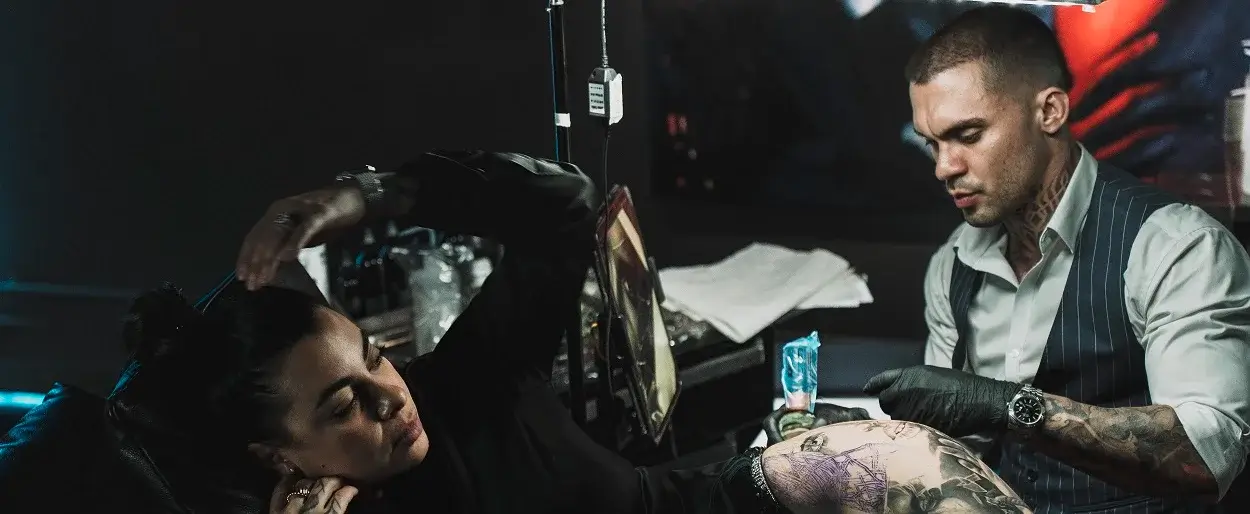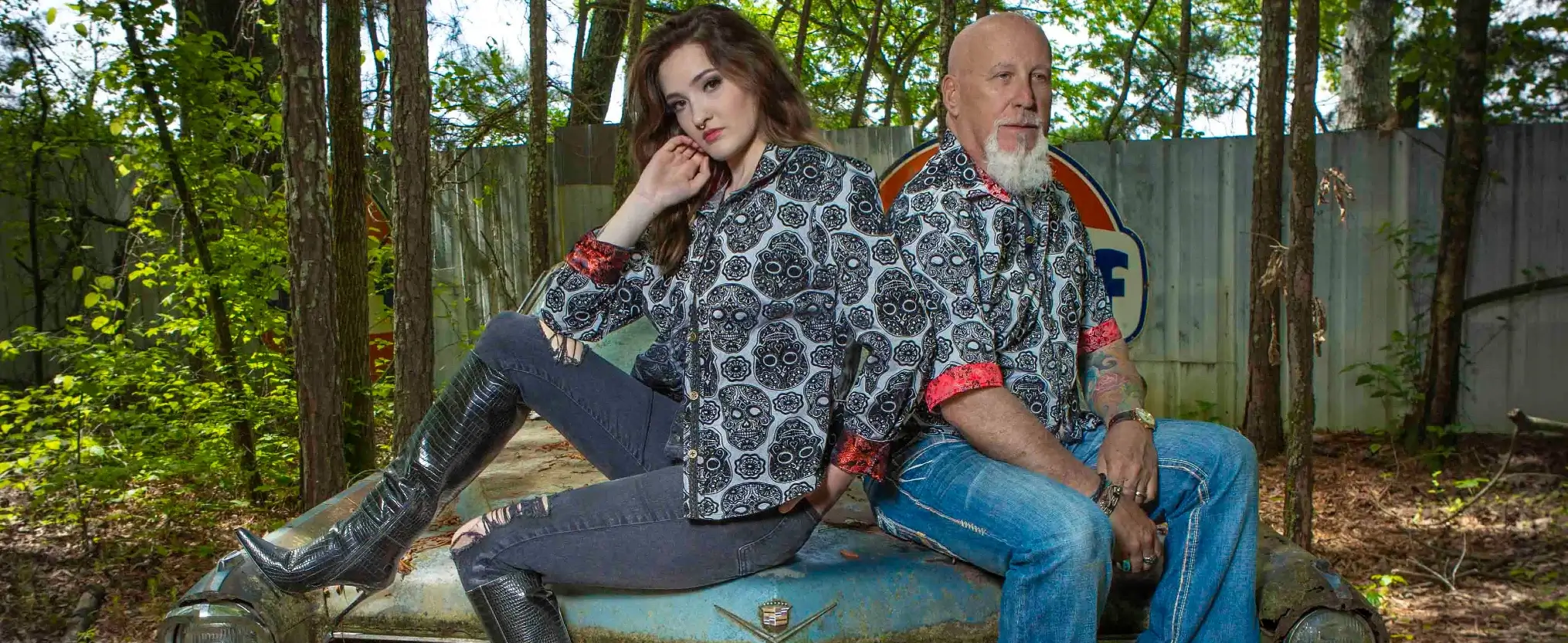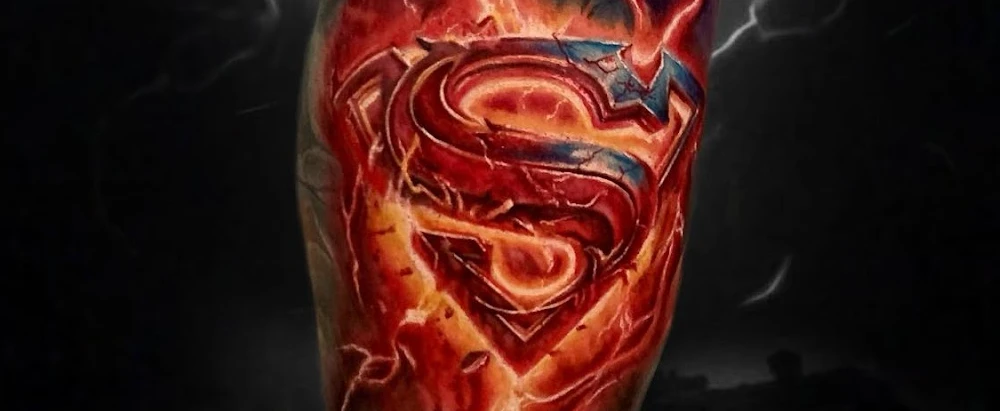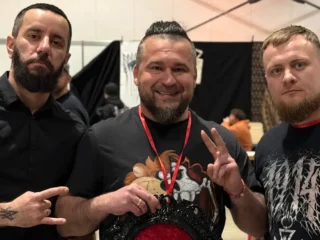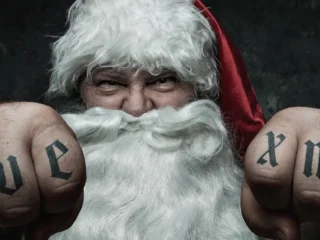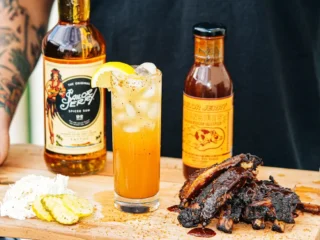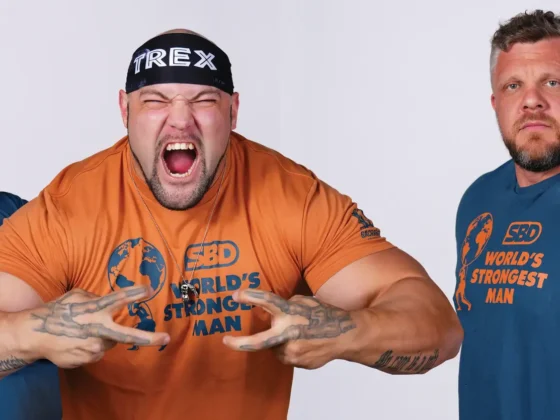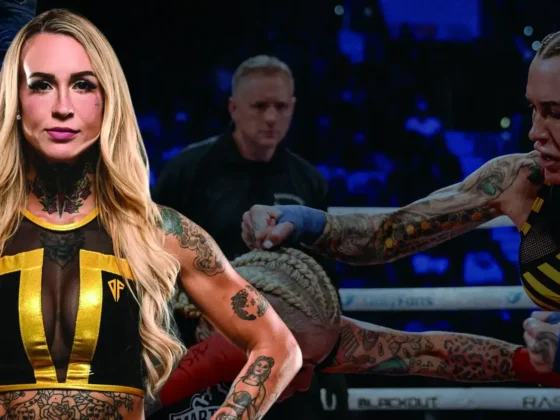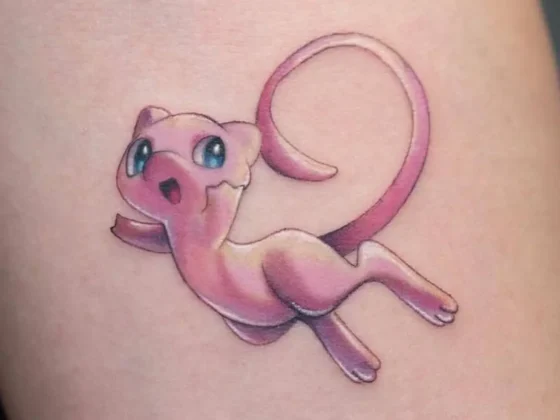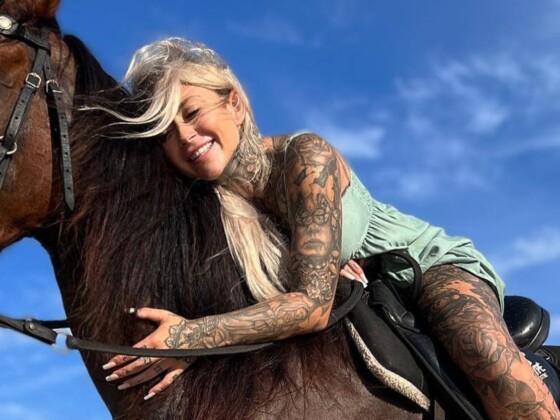Inked Mag Staff
March 5th, 2019
Legendary Tattoo Artist Rick Walters Passes Away at 72
Rest in peace to Rick Walters, one of the industry's most prolific icons
Photos by Willie Toldeo
On Monday, March 4th of 2019, legendary tattoo artist Rick Walters passed away at the age of 72. For 25 years, Walters operated Bert Grimm’s World Famous Tattoo on the Pike, the oldest tattoo shop in the United States, until it closed in 2002 and reopened as Outer Limits Tattoo. He was known as one of the most influential American traditional artists in history and will be remembered by the industry for generations to come.
Four years ago, Inked had the opportunity to interview Walters about his legacy. Take a look at our interview in the gallery below and let us know your thoughts on this story in the comments section.

Interview by Charlie Connell
When Rick Walters starts talking about tattoos you better shut up and listen to him. Walters has garnered so much experience over the last 60 years that he is more than just an artist—he is a living almanac of tattoo history. When he was barely even old enough to tie his own shoes the inquisitive Walters figured out how to hand-poke tattoos and he hasn’t stopped tattooing since.
By the late ‘70s Walters would find himself on the Pike—Southern California’s version of Coney Island and a Mecca for the tattoo world—tattooing out of Bert Grimm’s studio. It was there that Walters cemented his reputation as an artist and earned his seat in the Grimm family of tattooists.
We had a chance to speak with Walters early one morning—he needed to start doing walk-ins once his shop opened—about his start in tattooing, the importance of apprenticeships, why Rick Walters “Hates You.”

INKED: It’s pretty early, not a lot of tattoo artists want to do an interview at 9 AM.
Yeah. I get up really early, for a tattoo artist. (Laughs) I get up early every day. I used to work a real job when I had to get up at six in the morning.
How did you get into tattooing?
When I was a little kid I started hand-poking tattoos on all of the neighborhood kids. Just stupid shit like little hearts, writing, crosses and stuff you could do when you are little. I was like, 10. I was the kid that all of the moms told their kids to stay the fuck away from. That was in 1955.
How much trouble did you get into?
Oh, I got into a bunch of trouble doing that. When I was 14 my dad took me down to Long Beach to have a hand-poked tattoo that I did covered up. It was Zeke Owens actually; he did a black panther on my leg to cover up some writing. That was my first professional tattoo. Back in those days, they didn’t really hassle you too much about age, I think it was 1959.
Clearly, tattooing was in your DNA. When did you first start doing it professionally?
In 1965 me and this kid Frankie opened up this little shop and we didn’t know what the hell we were doing. Back in those days, you didn’t need a license or anything, you just had to pay rent. We had tattoo machines and we were trying to tattoo. We would go down to the Pike and watch those guys and try to figure out what the hell they were doing. When you’re self-taught that’s what you got to do. Eventually, I became friends with a few of the guys and they helped me out. I hung out with Phil Sims, Don Nolan and the old guys from Bert Grimm’s. It was all downhill from there. I almost always had a regular job and tattooed. Back in the old days, it was sort of like when you play music; don’t quit your day job.
What kind of other jobs were you working?
I would work in a machine shop or a welding shop in the day and then I would tattoo at night. In the ‘70s I was working structural steel during the day, you know, climbing high steel and doing welding. Then at night, I would tattoo and in my spare time, I owned a welding shop.
When did you get to give up the side jobs and tattoo full time?
I moved out to the Pike and started working at Bert Grimm’s in 1978. I worked at the Pike from ‘78 until 2003 when the shop closed.

So you were there for quite a while.
Only 25 years. I was probably the oldest employee there. I was there longer than Bob or Burt.
In 25 years you must have seen the area change remarkably.
When I first went there the Pike was mostly just people getting tattooed. The Pike was dying off, there were still a couple of rides and couple of bars but the main thing left was a bunch of tattoo shops. The Navy had left town. So consequently we were just tattooing civilians, bikers, waitresses. In the early ‘80s they reopened the Navy base and all of a sudden the tattoo game was on again. We were tattooing non-stop all day long.
Did you mind tattooing an endless line of people with no real downtime?
Yeah man, that’s fun, I love doing that. I’ve been tattooing for so many years now that if I didn’t like it I would have quit 20 years ago. I don’t have to tattoo, I do it because I like doing it. I’m over 60 years old and I own a tattoo shop, I have three guys working for me, I don’t have to go in and tattoo if I don’t want to. I can just kick back and let them make the money. But I’m at the shop every day at 10:30.
You just can’t stay away.
Nah, I like doing it. When I ain’t tattooing, I paint. I’ve probably done about 20 paintings in the last month or so.
Many people say that tattooing walks the fine line between being an art and a trade. As someone who is both a tradesman and an artist outside of tattooing where do you feel tattooing lies on the spectrum?
It’s a little bit of both. If you don’t know the trade part of it the art doesn’t really do you much good. You have to get the ink under the skin or it really isn’t relevant who drew the picture. The main objective is getting the ink under the skin and getting it to stay. The drawing part, it’s good and it’s very helpful if you can draw but it’s not really that important, the important shit is getting the ink under the skin. A lot of kids these days you find that they can draw really good but they don’t know how to tattoo. You can’t really compensate for that. If they are a really good artist they tend to have a tendency to think that they know what the fuck they are doing. But they don’t. Tattooing is a whole different game.

So you believe that since some tattooists refuse to learn the trade side of things they will end up creating tattoos that don’t last.
What people don’t understand when they haven’t studied the history of tattooing is what makes a good tattoo. The thing is that the black ink is carbon-based while the color ink is pigment based. The carbon-based ink becomes hard and creates a dam that keeps the pigment from spreading. Consequently, if you don’t have black the pigment will just keep going and it’ll look like somebody just poured a bunch of crayons onto the floor. These guys who think they can tattoo like they are oil painting will find out that it ain’t going to work. Sooner or later that shit is going to look horrible. All of these new kids that are doing this neo-traditional with the 14 needle round lines—that stuff is going to be nasty in 10 years. Lines double about every five years. So if you start out with a 1/8 inch line and you wait a couple of years that’s going to be as wide as a piece of electrical tape. Whereas if you start out with a thin line and it doubles the line will still be thin. People don’t realize it but all of the West Coast stuff and Sailor Jerry stuff ain’t got no big thick lines. Bob Shaw, Bert Grimm, Phil Sims, Col. Todd, look at all of their flash. It’s all nice thin lines. I have tattoos that were done on me that were done in the late ‘50s, early ‘60s, that look fine. The lines started out thin and now they look like a five needle outline, and they are 50 years old. These young kids don’t even know because no one ever taught them properly, they never served an apprenticeship. They just pick up a tattoo machine and think they can do whatever.
Do you think the industry has moved to a point where there is no going back to that way of learning?
I doubt it, because of the internet and everything being so accessible. There are a few people that are serving apprenticeships, don’t get me wrong. All of the new kids are using rotary machines because you don’t have to know anything, it’s just a motor. If it stops running you put a new motor in it. With a spring-loaded machine, you need to actually know how to work on them in order to get them to work right. They actually work better but you have to know how to use them. So if you don’t serve an apprenticeship you don’t know how to work on the spring-loaded machines. If you don’t know your equipment you can’t do what it’s supposed to do.
While there are certain fundamentals that need to be followed to create quality tattoos, do you ever think that these rules limit the creativity and artistic aspect of things?
It’s sort of weird, tattooing just sort of goes in circles. There will be thin lines, big lines, no lines. It changes when they see it years later. Guy Aitchison is using lines now. It’s funny. Shawn Barber, a real famous oil painter, served a six-year apprenticeship in a traditional tattoo shop in San Francisco. He is probably one of the most renowned portrait painters right now but he tattoos with black, know what I mean? He don’t do that art fag shit. He does really nice, realistic looking stuff, but he uses outlines. Because he learned that’s the proper way to do it and that’s how tattoos last.
Do you think that the mainstream acceptance of tattoos and the celebrity status some artists achieve has been detrimental to the industry as a whole?
It’s become too art faggy. People come into the shop and ask me how far in advance I am booked. I tell them that I’m not a fucking hairdresser, I don’t make appointments. I make tattoos. Bring some money, tell me what you want and we’ll make it happen. I just don’t get that attitude. Fill the shop with money. Some artists say they won’t do names. What are you, a fucking idiot? Names cost 150 bucks and they take five minutes. Come on, let’s do the math here.

In some ways it might be a good thing that people turn down certain tattoos though, right?
It’ll be because they can’t do a good job at the tattoo. They don’t comprehend what tattooing is all about. If you’re an oil painter or a watercolor guy you can do a painting and hang it up in an art gallery. A thousand people will walk past that motherfucker before some guy likes it enough to buy it. With tattooing, you have one shot at getting what that fucker wants on him the way he wants it. Not the way you want it, we don’t have artistic license, it’s not my body. I have to put what he wants on him and I’ve got one shot at doing it. [Artists] think that they can tell people what they have to get, that’s not how it works. The client has to tell me what they want. I do tattoos all day long that I would never want on me. You have to realize that you have to put what they want on them.
We know that you will do whatever kind of tattoo your customer wants to get, but given your druthers what kinds of work would you do?
I really like doing big Japanese pieces. I also love doing big American Traditional pieces—eagles, peacocks, whatever. It’s weird because I’ve been doing it for so long that I’m pretty versatile in most aspects of tattooing. I like doing a good black-and-grey piece every once in a while too. When you have been doing it for as many years as I have it isn’t as much about doing what I like doing the best as it is not doing the stuff I don’t like to do. I really don’t like doing portraits. I’ve done them and I can make them happen but they are a pain in the ass and time-consuming. They’re really tedious, so I just let the younger guys do them. I got to do a traditional Polynesian design the other day. It’s not hard to do, you just need to research this shit and draw it up the way it should be.

One fascinating thing about tattooing is that while it is ever evolving the root element—decorating the skin with ink—has remained the same.
I have a tattoo on my ankle that was tapped in with wild boar’s teeth.
It’s a traditional Samoan method. My whole chest was done tebori, the traditional Japanese style. I did it simply because I wanted to experience the traditional style. Maybe I’m different than some people. The one on my ankle is the only tribal tattoo I have and I have it because I wanted to see what it felt like to do it the old way. I had one of the members of the famous Sulu’ape family hand tap it with boar’s teeth and homemade ink.
How did the totally badass “Rick Walters Hates You” shirts and stickers come to be?
Well, back in 1974 I was on a motorcycle run-up in San Francisco. I had been on the road for seven or eight days and I went into a photo booth. You know, back when it was actually a quarter. I took a series of four pictures or whatever. When I got back from the run I gave one to my sister, one to my ex-old lady, and who knows what happens to the other ones. About five years ago my sister posted the picture on Facebook and I looked at it and thought, that’s funnier than shit. I was at a tattoo convention in Vegas talking to Matt Murphy and he said, “That’s a fucking hate you picture if I’ve ever seen one. You look meaner than shit in that picture.” Two or three weeks later I get a package in the mail and it’s a stack of stickers that say Rick Walters Hates You. I laughed and thought it was pretty funny. I started passing them out to a couple of people and the whole thing took off. It took on a life of its own. There are stickers, posters, T-shirts. It’s funny as shit.
And eventually, there were the stickers with the older version of you.
I’ve got a deal with the guys from Black Market, the clothing company, where we did an art show and they made some shirts of my artwork. They took a new picture of me that looks pretty much the same way and it says Rick Walters Still Hates You.
You’ve also done some tattoos of the image as well.
What was it like to be tattooing a picture of yourself on strangers? I’ve done a bunch of those tattoos. It’s pretty simple, it’s just a caricature. It’s a little bit strange. I’ve done so many of them I can knock them out quickly now, it’s pretty funny.
When Bert Grimm’s shut down you went into a bit of a semi-retirement, right?
What happened was that once Wanda Shaw died Larry Shaw sold out the property right out from under us. I wanted to kick his ass but I didn’t. I’m sure that his brother did though, Bobby worked with me at the Pike, and Larry sent us an eviction notice. That’s some pretty shady stuff.

That’s how you found out the shop was closing?
Yep. I worked there for 28 years, I was supposed to be getting a gold watch and a pat on the back and instead I get evicted. That’s the kind of thanks you get from some fucking asshole like that. Anyway, I quit tattooing for a little while. I figured fuck it, I’ll just retire. I had some money put away and my old lady had a pretty good job. That didn’t last for more than four or five months before I had a heart attack. That sucked. So I went back to tattooing.
When you came back from tattooing you hopped around to a bunch of different shops for a day per week. What made you want to end your nomadic lifestyle and plant roots and set up a shop once again?
Right down the street from where I lived there was a tattoo shop that went under. I’m not sure what the hell happened but they couldn’t pay their rent. I ran down and talked to the guy and told him that I would try and get a business license. I got one and went down to lease the building. We had to gut the entire place; it was a total nightmare. We built everything in the shop, all the counters, and everything. Opened the doors up and we’ve been paying the bills ever since the doors opened. If in the first six months you can still pay the bills that’s a good thing. I’ve got a ten-year lease with a five-year option, so hopefully, that keeps up.
By the end of that you’ll be about 85-years-old, right?
So you should be ready to retire by then. Yeah, fuck that. I’m going to die in a tattoo chair.
Getting a tattoo or giving one?
(Laughs) Who knows?
Editor's Picks
Bridging Classical Art and Modern Tattooing
Esteban Rodriguez brings the discipline of classical fine art to the living canvas of skin, creating hyper-realistic tattoos that merge technical mastery with emotional depth.
Show Your Ink Fashions Brings Custom Style to Tattoo Culture
Show Your Ink Fashions creates custom shirts designed to showcase your tattoos as wearable art, blending fashion with personal expression.
The Ultimate “Superman” Tattoo Roundup: Just in Time for Superman’s Return to Screens
With Superman’s big return to theaters, fans are revisiting some of the most iconic ink inspired by the Man of Steel.


